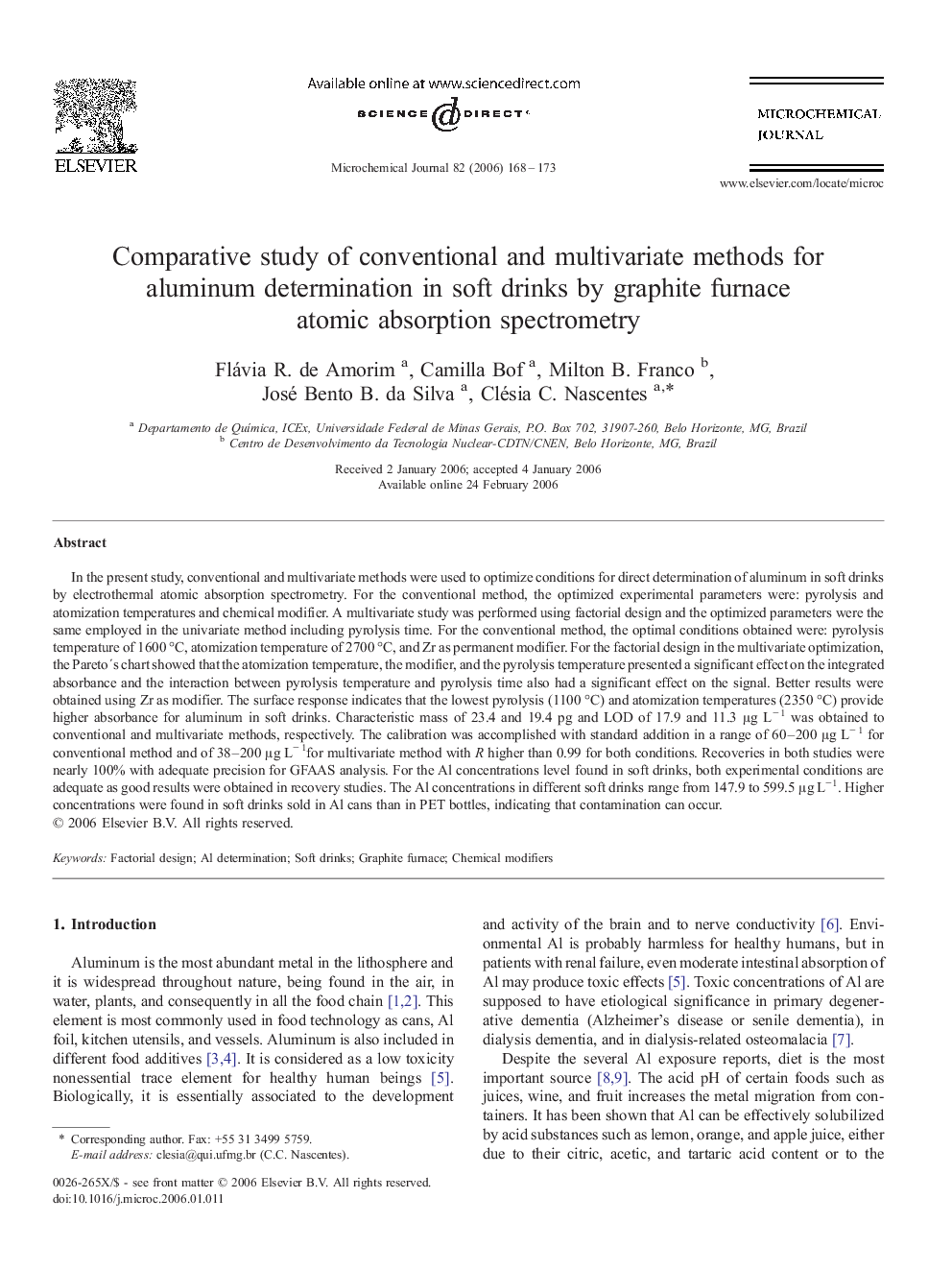| Article ID | Journal | Published Year | Pages | File Type |
|---|---|---|---|---|
| 1228612 | Microchemical Journal | 2006 | 6 Pages |
In the present study, conventional and multivariate methods were used to optimize conditions for direct determination of aluminum in soft drinks by electrothermal atomic absorption spectrometry. For the conventional method, the optimized experimental parameters were: pyrolysis and atomization temperatures and chemical modifier. A multivariate study was performed using factorial design and the optimized parameters were the same employed in the univariate method including pyrolysis time. For the conventional method, the optimal conditions obtained were: pyrolysis temperature of 1600 °C, atomization temperature of 2700 °C, and Zr as permanent modifier. For the factorial design in the multivariate optimization, the Pareto´s chart showed that the atomization temperature, the modifier, and the pyrolysis temperature presented a significant effect on the integrated absorbance and the interaction between pyrolysis temperature and pyrolysis time also had a significant effect on the signal. Better results were obtained using Zr as modifier. The surface response indicates that the lowest pyrolysis (1100 °C) and atomization temperatures (2350 °C) provide higher absorbance for aluminum in soft drinks. Characteristic mass of 23.4 and 19.4 pg and LOD of 17.9 and 11.3 μg L− 1 was obtained to conventional and multivariate methods, respectively. The calibration was accomplished with standard addition in a range of 60–200 μg L− 1 for conventional method and of 38–200 μg L− 1for multivariate method with R higher than 0.99 for both conditions. Recoveries in both studies were nearly 100% with adequate precision for GFAAS analysis. For the Al concentrations level found in soft drinks, both experimental conditions are adequate as good results were obtained in recovery studies. The Al concentrations in different soft drinks range from 147.9 to 599.5 μg L−1. Higher concentrations were found in soft drinks sold in Al cans than in PET bottles, indicating that contamination can occur.
